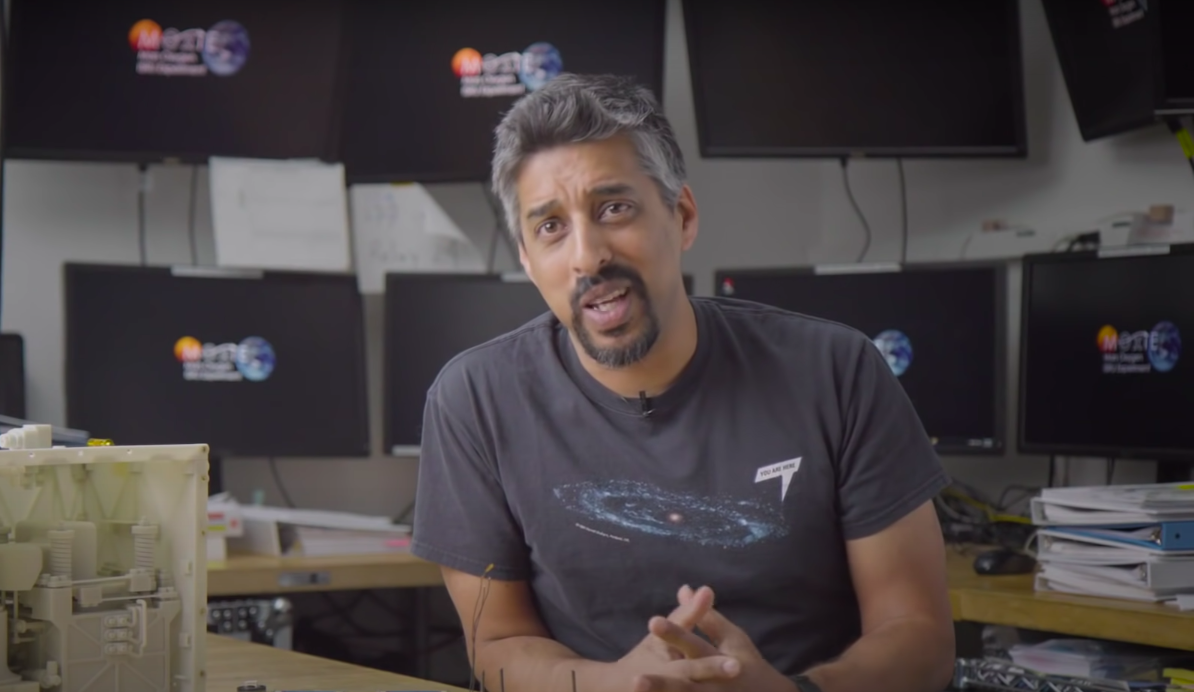Sci-fi geeks may be quick to remember a device called “the oxygenator,” from the Ridley Scott blockbuster The Martian, featuring Matt Damon. Nowadays, the basic idea behind building an oxygen-generating device on Mars is set to become a reality with Moxie (Mars Oxygen ISRU Experiment), as Asad Aboobaker explains.
Aboobaker, instrument systems engineer at NASA Jet Propulsion Laboratory, breaks down how. NASA will create a version of “the oxygenator” as a part of its Mars 2020 mission. The mission entails sending the Perseverance rover, manufactured in Aboobaker’s department, to the Jerero crater on Mars.
With a launch date of July 17, the rover should arrive at its destination on February 18, 2021. It will then begin probing Martian rocks to find evidence of past life. Additionally, it will collect samples for possible return to Earth.
Asad Aboobaker explains how Moxie works
Moxie, in simple terms, frees oxygen from the CO2-dominant atmosphere of Mars. It could become a big stepping stone for future human exploration of the red planet. The test device, roughly the size of a car battery, creates oxygen much like trees do. It takes in CO2, and splits the carbon and oxygen. After that, it tests and releases the oxygen – ready for human (or animal) lungs.
The process of splitting the carbon and oxygen requires a lot of heat. As a result, Aboobaker notes that gold plays a key part in the setup. Moxie has a golden box, “because we were concerned that Moxie itself would run hotter than anything else around it. And we wanted to make sure we didn’t impact any of the nearby electronics boxes inside the rover.” Gold has a low thermal emissivity, meaning that it does not radiate much heat.
On Mars, CO2 is “probably the most abundant resource [sic] other than dirt,” as Aboobaker highlights. He and his team at NASA expect Moxie to make around six grams of oxygen per hour. This amount ought to keep a small-sized dog alive – but not a human. At this point, Moxie represents a crucial experiment to “pave the way for future human exploration of Mars by demonstrating the ability to generate oxygen.”
Training in physics and thermal engineering leads to NASA’s labs
Trained in physics and astrophysics at UC Berkeley and Princeton University, Aboobaker specialized in thermal engineering upon completing his PhD. He combined his expertise in thermal engineering with his skills in mechanical design working on the NASA-funded EBEX collaboration at the University of Minnesota.
Prior to coming to the Jet Propulsion Laboratory at NASA, “almost all of my experience is in developing hardware,” says Aboobaker. You learn “a lot of the aspects of how things fit together.”
“You have to learn how things get built,” if you want to build hardware that goes to space or Mars. Now, Aboobaker has joined together with a number of other team members from around the world, to bring this futuristic feat to fruition.
Asad Aboobaker paving the way for human expedition
At this point, Moxie is only a small-scale oxygen plant, weighing around 17 kilograms.
“Right now the heaviest thing we’ve landed on Mars is approximately a 1-ton rover, and we need hundreds of tons of oxygen,” says Aboobaker. So for advanced exploration missions involving humans, oxygen generators will have to grow exponentially from this initial test.
In fact, in order to be used in future human Mars explorations, NASA will have to scale Moxie up by a factor of 200. In that case, it would be delivered to Mars 2 years before the arriva1 of humans and generate oxygen, ready to be used two years later. This will be critical for those humans’ return to earth.
Yet, Moxie marks a very important step towards the future human exploration of Mars. Since it needs a significant amount of power to operate on Mars, Moxie will be utilized intermittently and “opportunistically.”
The goal: to understand how Moxie behaves under various conditions. In order to do this, they plan to sample different environmental conditions – day versus night, summer versus winter, dust storm versus no storm.
See more information on Moxie here, and the Perseverance rover here.



